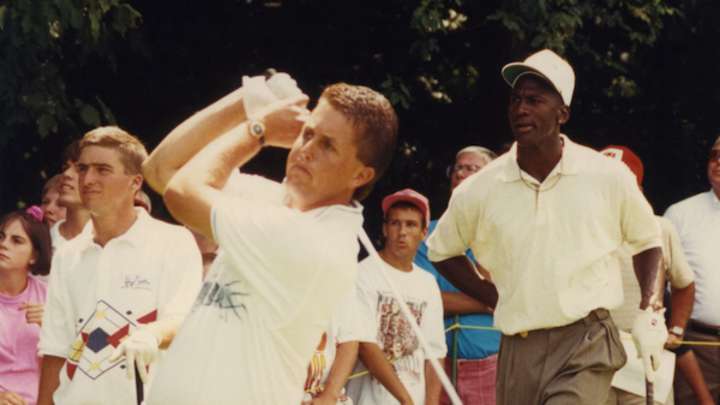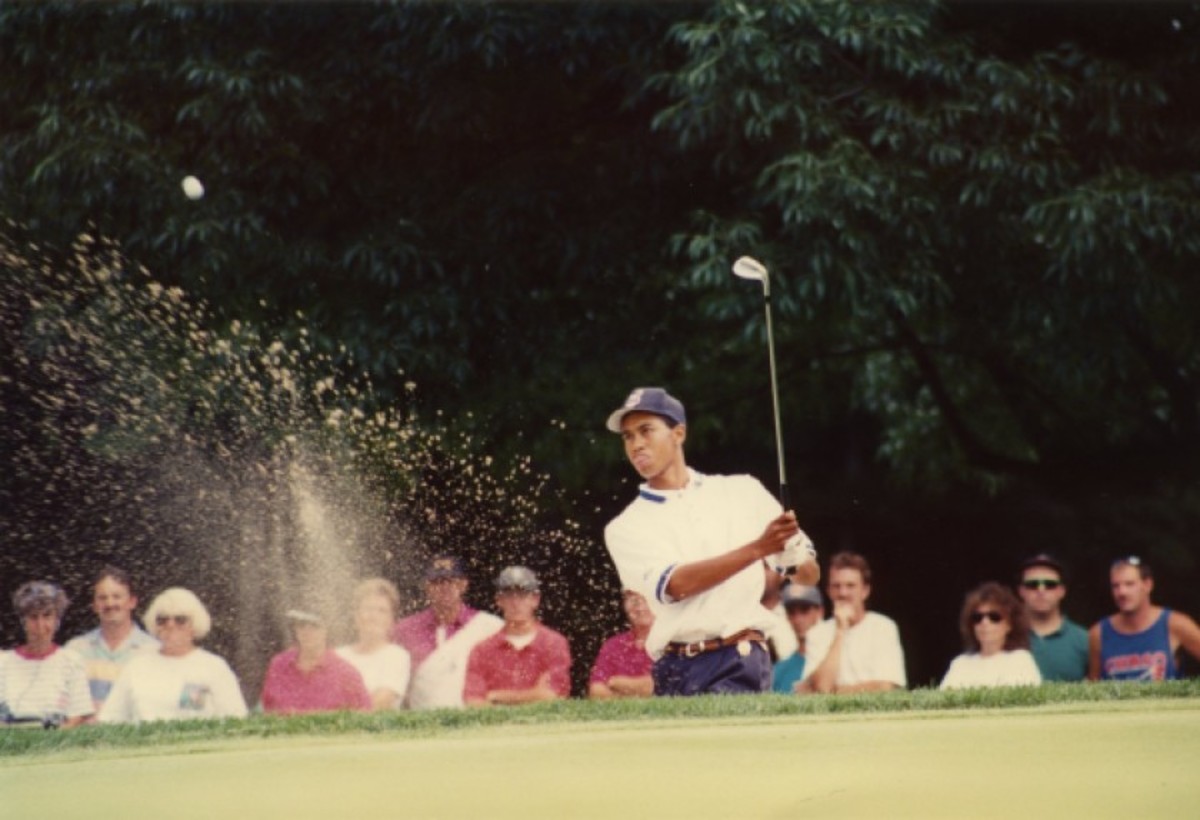Western taps into its past to make Point

After a 10-year absence, the Western Amateur returns to Point O’ Woods Golf & Country Club in Benton Harbor, Mich., this week, conjuring memories of big crowds, parties, live radio play-by-play and competitors who have gone on to etch their names into the annals of golf history.
Texas sophomore Cole Hammer, winner of the Phil Mickelson Award for the nation's best freshman golfer, will be back to defend his title in an elite 156-man field that includes 15 of the top 20-ranked amateurs. The uniquely grueling two-part event, which begins today (tee times), consists of 72 holes of stroke play to qualify 16 players for match play to determine a champion.
Two-time Masters champion Ben Crenshaw, who won the 1973 Western Amateur, said he has fond memories of his three-year run at “The Point” and is happy to see the Western Golf Association return there.
“The people really came out to watch,” said Crenshaw, a two-time Masters champion. “At the other amateur tournaments we played, we never played in front of people, but we did at the Western. You felt like you were someplace very important – and we were. It was keen competition and a great golf course.”
Founded in 1899, the Western is the third-oldest amateur event in the world, after the British Amateur (1885) and the U.S. Amateur (1895).
When 1974 champion Curtis Strange talked about the Western’s “Return to The Point,” his voice brimmed with excitement.
“It was the first time we played in front of people,” said Strange, a two-time U.S. Open winner and now an analyst for Fox’s U.S. Open coverage. “It is a great golf course. I’m happy they’re going back there.
“You know, in our day, it was the U.S. Am and the Western Am because the WGA and USGA ran those events. Golf organizations. The rest of the tournaments were run by the clubs, the towns. And the NCAA was a college tournament.”
Crenshaw agreed: “When I started to play amateur events when I was 19, the other amateurs told me the big one is the Western, a great tournament and hard to win.”
Point O’ Woods is located in a delicious enclave of verdant southwest Michigan, which hosted amateur golf’s most challenging tournament for 38 consecutive years, from 1971 to 2008. The mix of small-town residents and summer vacationers creates an idyllic Midwestern atmosphere even while acknowledging some serious social ills in the nearby community.
At the Point, an incredible group of still-incubating young players such as Crenshaw, Strange, Hal Sutton, Justin Leonard, Phil Mickelson and Tiger Woods began to sketch the outlines of their careers beneath the canopy of soaring oaks at the muscular Robert Trent Jones Sr.-designed course.
“It was a great golf course,” Crenshaw said. “You couldn’t miss a shot.”

COURTESY OF THE WESTERN GOLF ASSOCIATION
Phil Mickelson might not have been the biggest name in the 1991 Western Amateur – Chicago Bulls star Michael Jordan landed a spot in the event – but Mickelson emerged as the MVP.
In 1991, Michael Jordan stood on the cusp of winning six NBA titles. He followed his famous golf jones to the Point and – somewhat controversially – played the first two rounds of stroke play with Mickelson. They attracted estimated crowds of 5,000.
Jordan missed the cut – as expected, the purists sniffed – and the fans loved it. Mickelson, the medalist, went on to win the tournament, Justin Leonard in the match-play final. Leonard would go on to win in ’92 and ’93.

COURTESY OF THE WESTERN GOLF ASSOCIATION
At age 18, Tiger Woods won the 1994 Western Amateur, shortly before he claimed the U.S. Amateur title and then enrolled at Stanford.
Woods arrived in ’94 and defeated fellow Californian Chris Riley, a future Ryder Cup teammate, 2 and 1, in the final.
Later that decade, Johnny Miller would grab a microphone and help broadcast nearby St. Joe’s WSJM-AM and FM’s live play-by-play coverage of his son Andy’s Sweet Sixteen matches. Andy lost twice in the finals, in ’97 and ’99, but Johnny eventually won big, retiring from NBC as arguably golf’s best-ever TV analyst.
This year, Western Amateur admission is free. But in 1977, Peter deYoung’s first year as WGA tournament director, admission was $5.
“They were selling tickets,” said deYoung, who had run the North & South Amateur at Pinehurst (N.C.) Resort. “That was amazing to me.”
Bob Gerbel, 84, a now-retired WGA director who marshaled the ninth tee for decades and who is volunteering again this year, said the Western brought joy to the community and is doing so again.
“Back in the day, it really drew a big crowd,” said Gerbel, a Point O’ Woods member and retired local business owner. “In the ’70s, we had 20,000 people over the course of the week. Five thousand people watched the match play.”
There was more.
“It wasn’t only a golf tournament; it was a big party,” Gerbel said. “The players would stay with local families, and they would come back three or four years in a row.
“I saw Billy Andrade a couple of years ago [at the Senior PGA Championship] at Harbor Shores [golf course in Benton Harbor], and he said, ‘Hi, Dad!’ And Andrew Magee stayed with my daughter’s family during that [Senior PGA] week like he had stayed with us 30 years ago.”
As the years went by, attendance diminished. Things change. No one knows why. But the golf itself is still attractive, a reward to the WGA’s focused effort to recruit the top players.
This year’s field also includes Arizona State’s Chun An Yu of Taiwan; recent Stanford graduate Isaiah Salinda; U.S. Open qualifier Austin Eckroat; Florida State’s John Pak and Players Amateur champion Spencer Ralston of Georgia.
Someday, a few of those names might mean something special in the world of golf.
As always, the format will be the toughest of any tournament, amateur or pro. By the time it ends, the two finalists will have played some 144 holes (the equivalent of two 72-hole PGA Tour events) in five days, depending on how many holes are required to determine a winner in the matches.
It starts with 18 holes of stroke play today and Wednesday, with a cut to the low 44 and ties. Thursday brings 36 more holes of stroke play to determine the 16 match-play contestants. Two matches Friday and two more on Saturday will identify the champion.
Over the years, 34 Sweet 16 qualifiers have gone on to win 83 professional majors, including Jack Nicklaus (18), Woods (15) and Tom Watson (8). Jordan Spieth has three.
Since Danny Lee won at the Point in 2008, some things have changed. The members built a 10,000 square-foot clubhouse overlooking the ninth and 18th greens on the site of the former parking lot. Trees have been thinned to improve air circulation and growing conditions. Bunkers have been upgraded. Normally a par 72, the 7,075-yard track will play as a par 70 for the tournament, with Nos. 3 and 15 being converted from par 5s to par 4s.
Most importantly, the membership and the larger community are eager to welcome back the best amateurs in the world.
“For us, it’s a very big deal,” said Bruce Pfaff, Point O’ Woods board president, tournament chairman and previous contestant. “The members are tremendously supportive. We have a lot of people who have joined the club in the last 11 years who have never experienced what it’s like to have the world’s top amateurs competing on their golf course and hitting it in places they’ve never seen anybody hit it before.”
During the past decade, the WGA has taken the Western to some of Chicago’s finest classic courses, including Skokie, Beverly, Exmoor and North Shore, while evangelizing the Evans Scholars Foundation and its caddie scholarships. Attendance at those courses was decent for the final match but nowhere near the glory days at the Point. So, what about attendance this year?
“I think people are excited for it,” Pfaff said. “This is the only really big event in town. We have stopped charging admission because we want to open it up to everyone.”
No matter what the attendance might be, the Point wants to be part of the future. (Next year, the Western will move to Crooked Stick in Carmel, Ind.) A rotation is desirable from the clubs’ perspective in that their members have to give up their course only for a week once every few years, not 38 years consecutive years, as it was at the Point.
“We very much would like to host in the future as part of the WGA’s rotation,” Pfaff said.
It shouldn’t be a hard sell.
Barry Cronin, a former golf writer with the Chicago Sun-Times, is media director for the John Deere Classic and head of Cronin Communications. He lives in Park Ridge, Ill. Email: bcronin@cronincommunications.com
